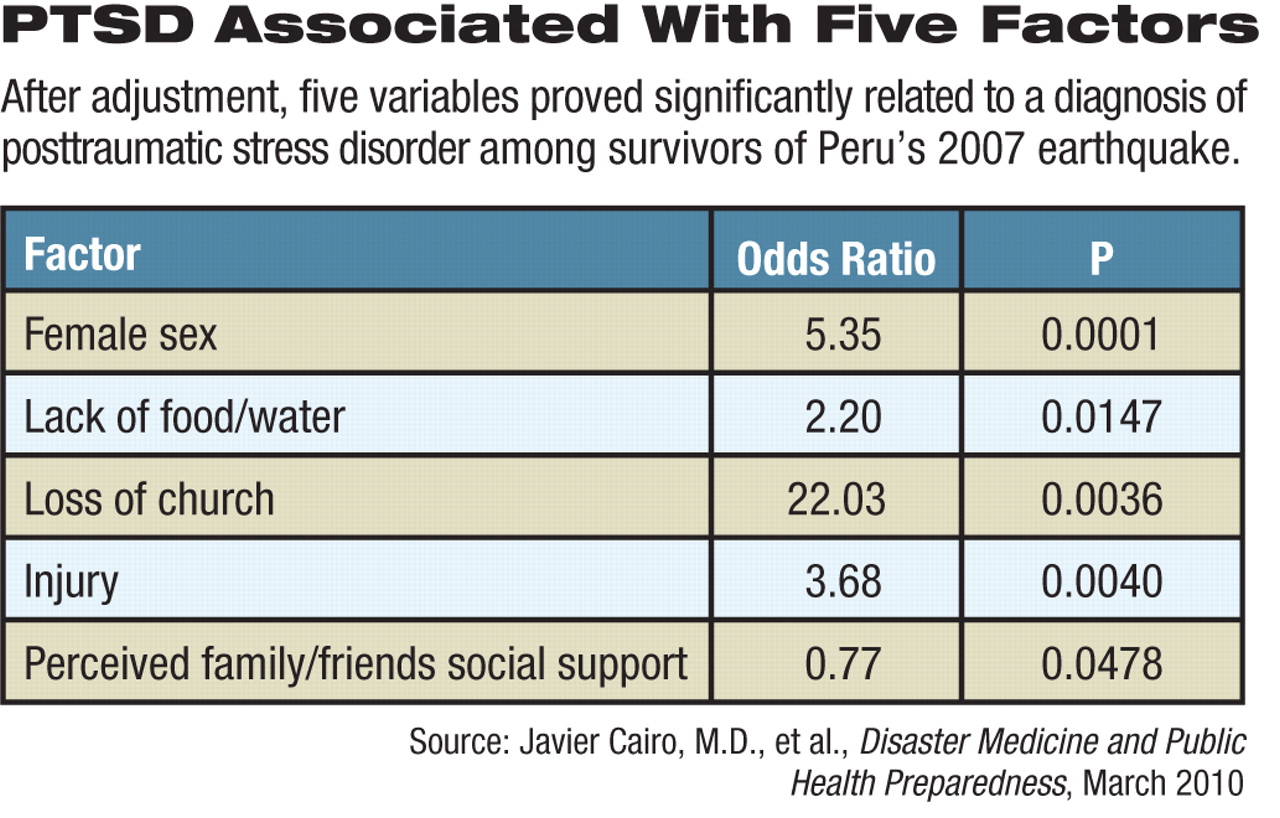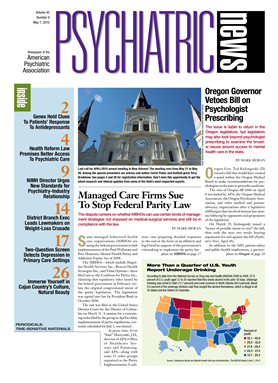The earthquake that struck southwest Peru in 2007 left behind an all-too-familiar scene of death and devastation, along with a pattern of posttraumatic stress disorder (PTSD) that reflected both personal and social suffering.
The 8.0 magnitude quake's epicenter lay 60 km off the coast of the city of Pisco (population 53,000), where 383 of the 596 deaths were recorded. The city also lost 70 percent of its houses, and the electrical, water, and sewage systems were destroyed. One of the town's two hospitals was wrecked, and only the emergency department at the other was usable after the earthquake.
Five months later, a team of U.S. and Peruvian researchers surveyed adult residents of Pisco to estimate the rate of PTSD and identify any correlates with demographic or other factors.
One in four of the city's residents in the sample reached the threshold for PTSD, according to Javier Cairo, M.D., M.P.H., a fellow in infectious disease at the University of Texas M.D. Anderson Cancer Center in Houston, and colleagues, writing in the March Disaster Medicine and Public Health Preparedness.
The researchers identified 774 city blocks in Pisco and its suburbs and then randomly selected 150 for study.
They collected demographic data from residents in two randomly chosen houses in each block using the Spanish version of the PTSD Checklist and the traumatic events section of the Harvard Trauma Questionnaire. Of the 298 adults surveyed, 75 (25 percent) reached the threshold for diagnosis of PTSD.
About 68 percent of the subjects were women, and 84 percent were Catholic. Half (51 percent) lost their homes in the quake, 69 percent lost a friend or relative, and 29 percent lost their jobs.
Among the quake victims, 64 women (32 percent) and 11 men (12 percent) were diagnosed with PTSD. The overall PTSD prevalence of 25 percent in the city met a commonly accepted standard for “moderate” impact of a disaster, said the authors.
However, the categorical approach used by the authors may underestimate exposure and prevalence, said Armen Goenjian, M.D., a research professor of psychiatry at the Geffen School of Medicine at UCLA. Goenjian has studied the psychiatric aftereffects of an earthquake in Armenia and a hurricane in Nicaragua.
“PTSD is not black and white. It's a spectrum of symptoms,” said Goenjian in an interview. “If you just have yes-or-no questions, you can miss a lot.”
Nevertheless, after adjustment for a list of factors associated with the disaster, the researchers found five factors that significantly correlated with PTSD (see table).
Female quake survivors were five times more likely than men to have PTSD. Women in general have higher rates of PTSD after trauma, but the authors also suggested that the added burdens of providing care for others after the disaster might contribute to that fact.
Factors that may have heightened the trauma worsened the earthquake victims' risk for PTSD. For example, loss of food and water after the quake doubled the chance of PTSD, and physical injury nearly quadrupled the risk. The survey did not include the most severely injured survivors, because they were transported to Lima for treatment.
Loss of food, housing, water, and other basics disproportionately affect the poor, said Goenjian.
“Recovery is also slower for poor people,” he said. “It may represent not more PTSD per se, but just more adversities. Adversities retard recovery, but they don't cause PTSD.”
Nearly all the respondents (254 out of 298) lost their local church. That loss was associated with an odds ratio of 22 among those with PTSD.
“We believe that the disproportionate prevalence of PTSD seen among Catholics was most likely secondary to the destruction of the city's [three] Catholic churches during the earthquake,” wrote the authors. “In addition to the churches providing a place to worship, religious congregations can provide an important resource for coping with the negative impact of a disaster.”
“Religion is a powerful tool and can be a solace when people are vulnerable,” agreed Goenjian. “The connection of the loss of churches to PTSD is an important finding and needs to be included in future studies.”
Finally, people with better family and social supports were less likely to have PTSD, as expected. Other research suggests that levels of perceived social support predict the presence of PTSD between 6 and 12 months after a disaster, but the reverse occurs 18 to 24 months later: PTSD symptoms predict social support, wrote the authors.
They concluded that further research into the effects of the loss of social networks, including those centered on churches, on the psychiatric outcomes of disasters would be useful.
“The authors' findings highlight the need to better understand the range of behavioral health challenges occurring in the aftermath of unanticipated, catastrophic natural disasters,” said an accompanying editorial in Disaster Medicine and Public Health Preparedness by Carol Fullerton, Ph.D., a research professor in the Department of Psychiatry at the Uniformed Services University of the Health Sciences in Bethesda, Md., and colleagues.

